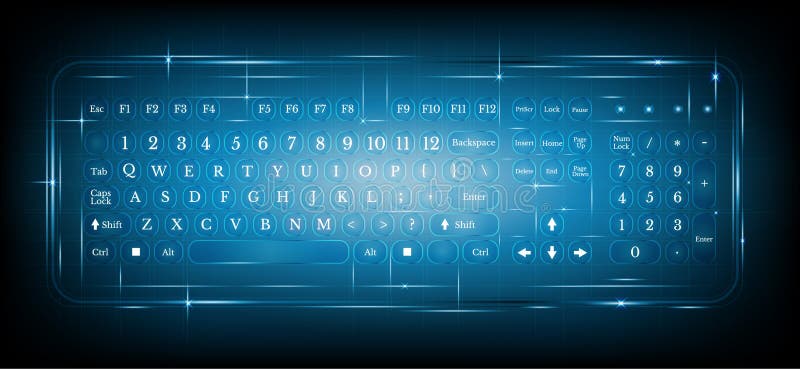

But apart from the science-fiction element, what sets a virtual laser keyboard apart from a regular keyboard?Ī traditional keyboard, one that hooks up to a desktop computer or is part of a laptop, is very much like another smaller computer. This allows you to write in a word-processing document, close out a program or write out a Web site's URL in a browser.
#Hologram desktop keyboard series#
At their most basic, all keyboards, whether they're physical or virtual, are input devices - once you type in a certain series of keystrokes, you're telling the keyboard to deliver a command to your computer.

Miniature keyboards, however, attempt to solve that problem by giving users a complete QWERTY setup to type e-mails, text messages and reminders. Some people are remarkably adept at this - just watch some people on a train or at the airport rifle through several text messages in a matter of no time - but for some, the act is cumbersome and takes far too long. On a typical cell phone with a three-by-four numeric keypad, for instance, where at least three letters are assigned to a number, you often have to punch through each key several times to get one word on the screen. Phones that are more focused on e-mail and text messaging, like the BlackBerry or several of the slider phones, offer these as a more straightforward way of typing out text. Today, even smartphones come equipped with smaller keyboards. Without keyboards, communicating between family, friends and businesses would be a much less streamlined affair. Most students take typing classes as early as elementary school, and word processing is one of the most common skills listed on a job-seeker's resume. And as easy as it may seem, typing is a skill we have to learn and practice in order to perform properly. Most of us with personal computers use a keyboard almost every day to compose e-mails, type out word processing documents, visit Web sites and perform searches. Sure, maybe you've bookmarked the Web site and you used your mouse to click around between several links, but most of the time, you probably type the Web site address into your browser to get here. Without your computer keyboard, whether it's part of a desktop or a laptop, it might've been fairly difficult to get to this article. Interesting links are bound to be posted with recognition going mainly to those who submit. That's why we thought it would be a good idea to create an email address for you to help us a little in finding gadgets we missed. We are just a few, but there are many of you, Softpedia users, out there. If you want to find out more about this futuristic device, please visit iwantoneofthose,com And in order to have as much of the feeling of a real keyboard as possible, the holographic keyboard is also fitter with some sound effects that mimic the sound of pressing real keys (something interesting probably just for the old-school fans that like this type of "music"). According to the people that have tested the device, it works quite well in strong light, although it's quite clear that it can show its true power in the dark, and i.Tech Virtual Keyboard also allows the user to change the intensity of the projected infrared rays. The holographic keyboard is also ultra-portable, because the projector is quite small (9 x 3.5 x 2.5cm ) and it also runs on batteries (although just for a maximum of 120 minutes of continuous typing). By means of a special detection technology, the device records the keys "pressed" by the user's fingers (more precisely, the presence of the fingers in the area onto which a certain key has been projected) and sends the data towards the unit it's connected to. I.Tech Virtual Keyboard is a Bluetooth-enabled device that can be connected to almost any computing system (laptops, PCs, PDAs, Pocket PCs or smartphones, the only requirement being that they must be Bluetooth-enabled), and which projects, via infrared, a holographic keyboard on any flat opaque surface.

Thus, i.Tech Virtual Keyboard is quite shocking because it has a very unique feature: it doesn't exist (namely, you cannot touch it), because it's a hologram. It looks like something you'd only see in a SF movie, but this little device is quite real, and could represent the future of one of the most important elements of any computer: the keyboard.


 0 kommentar(er)
0 kommentar(er)
